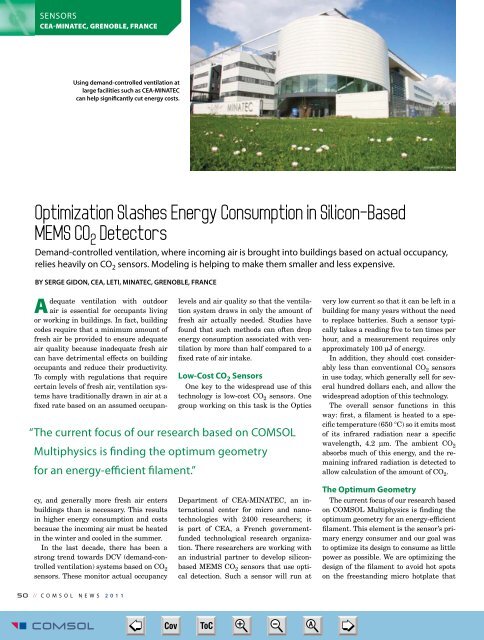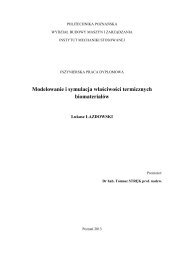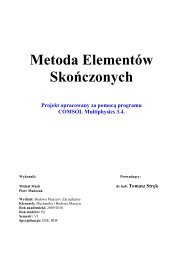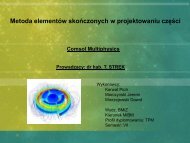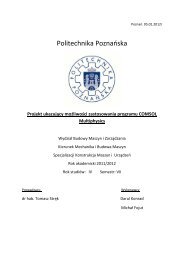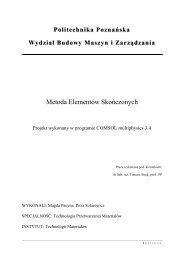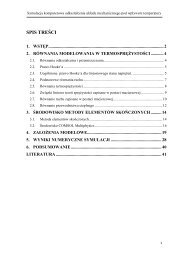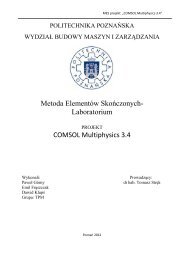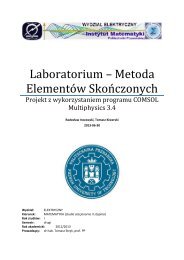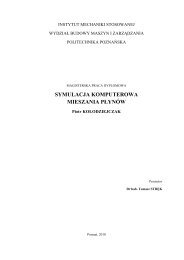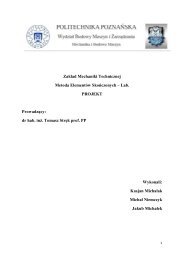Lithium-Ion Battery Simulation for Greener Ford Vehicles
Lithium-Ion Battery Simulation for Greener Ford Vehicles
Lithium-Ion Battery Simulation for Greener Ford Vehicles
You also want an ePaper? Increase the reach of your titles
YUMPU automatically turns print PDFs into web optimized ePapers that Google loves.
SENSORS<br />
CEA-MINATEC, GRENOBLE, FRANCE<br />
Using demand-controlled ventilation at<br />
large facilities such as CEA-MINATEC<br />
can help significantly cut energy costs.<br />
Optimization Slashes Energy Consumption in Silicon-Based<br />
MEMS CO 2 Detectors<br />
Demand-controlled ventilation, where incoming air is brought into buildings based on actual occupancy,<br />
relies heavily on CO 2 sensors. Modeling is helping to make them smaller and less expensive.<br />
BY SERGE GIDON, CEA, LETI, MINATEC, GRENOBLE, FRANCE<br />
levels and air quality so that the ventilation<br />
system draws in only the amount of<br />
fresh air actually needed. Studies have<br />
found that such methods can often drop<br />
energy consumption associated with ventilation<br />
by more than half compared to a<br />
fixed rate of air intake.<br />
Low-Cost CO 2 Sensors<br />
One key to the widespread use of this<br />
technology is low-cost CO 2 sensors. One<br />
group working on this task is the Optics<br />
“ The current focus of our research based on COMSOL<br />
Multiphysics is finding the optimum geometry<br />
<strong>for</strong> an energy-efficient filament.”<br />
very low current so that it can be left in a<br />
building <strong>for</strong> many years without the need<br />
to replace batteries. Such a sensor typically<br />
takes a reading five to ten times per<br />
hour, and a measurement requires only<br />
approximately 100 µJ of energy.<br />
In addition, they should cost considerably<br />
less than conventional CO 2 sensors<br />
in use today, which generally sell <strong>for</strong> several<br />
hundred dollars each, and allow the<br />
widespread adoption of this technology.<br />
The overall sensor functions in this<br />
way: first, a filament is heated to a specific<br />
temperature (650 °C) so it emits most<br />
of its infrared radiation near a specific<br />
wavelength, 4.2 µm. The ambient CO 2<br />
absorbs much of this energy, and the remaining<br />
infrared radiation is detected to<br />
allow calculation of the amount of CO 2 .<br />
Adequate ventilation with outdoor<br />
air is essential <strong>for</strong> occupants living<br />
or working in buildings. In fact, building<br />
codes require that a minimum amount of<br />
fresh air be provided to ensure adequate<br />
air quality because inadequate fresh air<br />
can have detrimental effects on building<br />
occupants and reduce their productivity.<br />
To comply with regulations that require<br />
certain levels of fresh air, ventilation systems<br />
have traditionally drawn in air at a<br />
fixed rate based on an assumed occupancy,<br />
and generally more fresh air enters<br />
buildings than is necessary. This results<br />
in higher energy consumption and costs<br />
because the incoming air must be heated<br />
in the winter and cooled in the summer.<br />
In the last decade, there has been a<br />
strong trend towards DCV (demand-controlled<br />
ventilation) systems based on CO 2<br />
sensors. These monitor actual occupancy<br />
Department of CEA-MINATEC, an international<br />
center <strong>for</strong> micro and nanotechnologies<br />
with 2400 researchers; it<br />
is part of CEA, a French governmentfunded<br />
technological research organization.<br />
There researchers are working with<br />
an industrial partner to develop siliconbased<br />
MEMS CO 2 sensors that use optical<br />
detection. Such a sensor will run at<br />
The Optimum Geometry<br />
The current focus of our research based<br />
on COMSOL Multiphysics is finding the<br />
optimum geometry <strong>for</strong> an energy-efficient<br />
filament. This element is the sensor’s primary<br />
energy consumer and our goal was<br />
to optimize its design to consume as little<br />
power as possible. We are optimizing the<br />
design of the filament to avoid hot spots<br />
on the freestanding micro hotplate that<br />
5 0 // C O M S O L N E W S 2 0 1 1<br />
➮<br />
Cov ToC + – A<br />
➭<br />
50-52 CN CEA 2011.indd 50 5/16/11 9:34 AM


